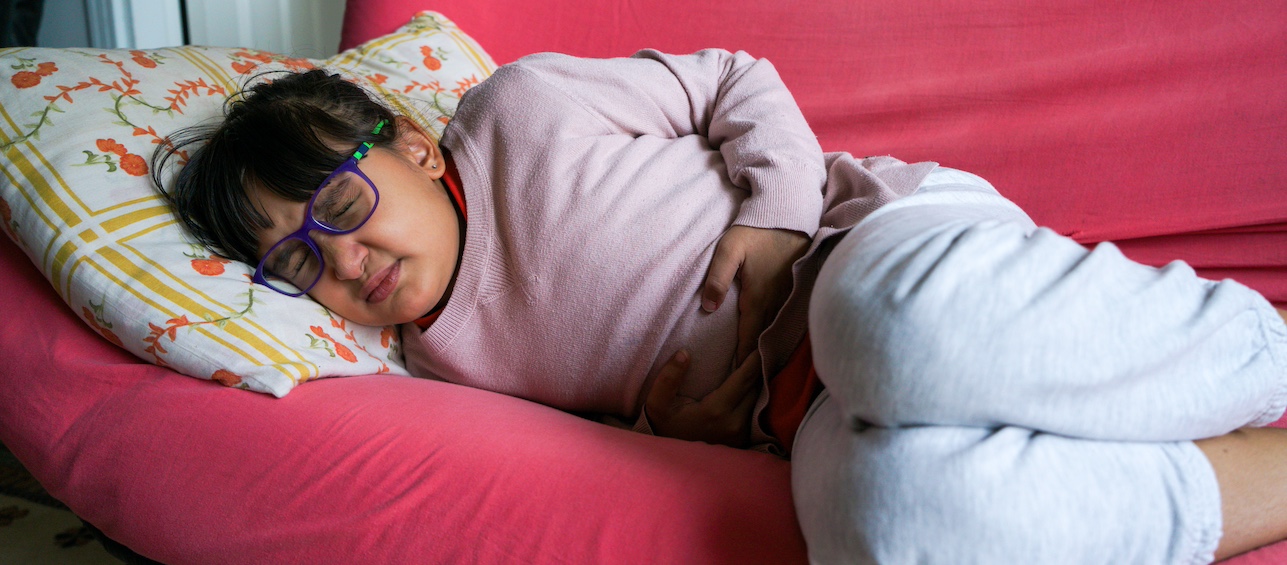Food is not fun for my five-year-old son, RJ. In fact, it hurts.
That’s because he has VEO-IBD, or very early onset inflammatory bowel disease. VEO-IBD is IBD diagnosed in infants and children younger than five years old, but it doesn’t always look the same as it does in older kids and adults. In fact, that’s what makes it so difficult to diagnose. Kids that young either have a difficult time telling their grownups what’s wrong; or they can’t tell them at all.
Even though RJ was diagnosed around two and a half years old, it was a long road to get there and to subsequently find the right treatment. When his flares were at their worst, he was still in diapers and had six to eight blowouts a day. We couldn’t go anywhere because it was such a mess. Since then, we haven’t achieved remission but he has been much more stable. There are days when we have to stay close to the bathroom. And on a good day, he looks like a typical five-year-old.
Sadly, the incidence of VEO-IBD is on the rise, and doctors and researchers don’t know why. They do know that there are three categories of things that can contribute to it: genetic mutations, a disrupted immune system, and environmental factors. RJ’s is caused by environmental factors, but his little sister has been raised in the same environment and doesn’t have the condition.
Because more and more families are discovering that their child has this disease, I’d like to share a few things we’ve learned about it, in case it helps them along the way:
VEO-IBD: 6 Helpful Things We’ve Learned
- The right mix for a shake
Because food is not fun for him and it actually hurts after he eats, he naturally doesn’t enjoy eating. It’s a constant battle for us. After much experimentation, we settled on a mix of mostly a low-sugar formula and a splash of regular formula. We’ll keep working on getting him to eat a variety of foods, but at least we know he’s getting the nutrients he needs and I feel better that it’s not loaded with sugar. - How to hide medicine
RJ’s doctors recommended we start with biologic treatment from the beginning. If we could get it in remission quickly, it would be better for him in the long-run. This required taking lots of medicine, and in the beginning, he was too young to swallow pills. We started off with grinding medicine and mixing it into applesauce and yogurt. For strong-tasting medicine, such as prednisone, we would mix it into pineapple juice or a milkshake.
- Tactics to swallow pills
Even though we had gotten pretty skilled at hiding medicine, I felt strongly that he needed to work his way to swallowing pills. So, we started with progressive candy. First, miniature M&Ms. Then Tic Tacs. Next, regular-sized M&Ms. Once he could swallow those, he was able to swallow everything. - Techniques to give shots at home
As we kept working to find the right mix of medicine for him, one option was a shot that needed to be given weekly at home. I was terrified it give it to him; he was three years old at the time. It took both of us and a lidocaine patch. My husband held him steady and distracted him while I put the patch on and gave him the shot. After doing it weekly we got pretty good at it, but ultimately the drug didn’t work for him. - How to get through six-hour infusions
Another treatment option that was discussed was a six-hour infusion of infliximab. I couldn’t stop thinking about how I was going to keep a three-year-old lying down and entertained for six hours straight. This is where Child Life stepped in. They were nothing short of amazing. We brought an iPad and they did the rest. We planned it around naptime so that he would get sleepy. - The importance of support from other families
VEO-IBD is one of those conditions that affects the entire family. We plan our days and meals around when and how RJ needs to eat and receive his medication. It takes a toll and we have found it incredibly helpful to talk to other families about it. We joined a Facebook group called VEO-IBD kids. Other families with the same condition help us out and we help where we can.
RJ is now five years old and preparing for kindergarten. We are by no means in a perfect place, but we are in a good place. Going to the bathroom is under control. He doesn’t eat well, but he’s getting the nutrients he needs and he’s growing. His energy levels are not where they need to be, but we’re anticipating that iron infusions will help. I have hope that as doctors and researchers learn more about this condition, there will be more treatment options available to him. Until then, we’ll continue taking it one day at a time.






